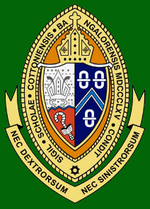Bishop Cotton Girls High School
 |
|
| Motto |
Nec Dextrorsum Nec Sinistrorsum (Neither to the right nor to the left) |
|---|---|
| Established | 1865 |
| Type | Private school, boarding school |
| Religion | Protestant (Church of South India) |
| Principal | Mrs. Lavanya Mitran |
| Chairman and Moderator | Rt. Rev. Dr. Prasannakumar Samuel, Karnataka Southern Diocese |
| Founders | Rev. S.T. Pettigrew, Rev. J. Gordon and Rev. R. Firth |
| Location |
St. Marks Road Bangalore Karnataka 560 001 India |
| Staff | 150 (approx.) |
| Gender | Girls |
| Ages | 4+ |
| Houses | Barton, Elmes, Foley, Maiden, Millington, Waller |
| Colours | Green and gold |
| Publication | The Cottonian |
Bishop Cotton Girls' School, or BCGS, is a private all-girls' school for boarders and day scholars in Bangalore, Karnataka, India. The school offers academic scholarships, which aid students from lower income backgrounds to afford tuition and boarding fees. It has been awarded the International School award by the British Council.
The school curriculum is based on the ICSE format of education, and has teaching facilities from Kindergarten, 1 to 10 (ICSE) and 11 and 12 (ISC).
Founded in 1865, it is one of the oldest established boarding schools in Asia.
The school was named after Bishop George Edward Lynch Cotton, the son of an Army captain, who died leading his regiment in battle. He was a scholar of Westminster School, and a graduate of Cambridge. In 1836 he was appointed Assistant Master at Rugby by Doctor Thomas Arnold, one of the founders of the British public school system.
It was the proposal of Bishop Cotton to create schools in India that resulted in the founding of Bishop Cotton’s on April 19, 1865. The institution was opened for both boys and girls in a bungalow named Westward Ho in High Grounds. In 1871, the management acquired 14 acres of land on St. Mark’s Road and shifted the school, demarcating two areas, one for the boys school and the other for the girls, with a wall separating the two.
In 1911, the management acquired Stafford House and its surrounding eight and a half acres with access to both Residency Road and St. Mark’s Road and shifted the school, giving Bishop Cotton Girls’ School its own identity. In 1915, money was sanctioned to construct the administration block and the quad. More buildings were constructed in the 1950s and 1960s including the Chapel of the Holy Family.
...
Wikipedia
